Make it sew Animal portraits come to life in subtle detail, one stitch at a time
Read this article for free:
or
Already have an account? Log in here »
To continue reading, please subscribe:
Monthly Digital Subscription
$0 for the first 4 weeks*
- Enjoy unlimited reading on winnipegfreepress.com
- Read the E-Edition, our digital replica newspaper
- Access News Break, our award-winning app
- Play interactive puzzles
*No charge for 4 weeks then price increases to the regular rate of $19.00 plus GST every four weeks. Offer available to new and qualified returning subscribers only. Cancel any time.
Monthly Digital Subscription
$4.75/week*
- Enjoy unlimited reading on winnipegfreepress.com
- Read the E-Edition, our digital replica newspaper
- Access News Break, our award-winning app
- Play interactive puzzles
*Billed as $19 plus GST every four weeks. Cancel any time.
To continue reading, please subscribe:
Add Free Press access to your Brandon Sun subscription for only an additional
$1 for the first 4 weeks*
*Your next subscription payment will increase by $1.00 and you will be charged $16.99 plus GST for four weeks. After four weeks, your payment will increase to $23.99 plus GST every four weeks.
Read unlimited articles for free today:
or
Already have an account? Log in here »
Hey there, time traveller!
This article was published 08/02/2025 (309 days ago), so information in it may no longer be current.
Zena van de Poel’s animal portraits are created from hundreds upon thousands of tiny, layered stitches.
Cotton, stretched taut across a hoop, is her canvas, and spools of colourful multi-stranded thread and various needles are the tools she uses to hand-embroider her textured thread “paintings.”
MIKAELA MACKENZIE / FREE PRESS Van de Poel's technique is labour intensive.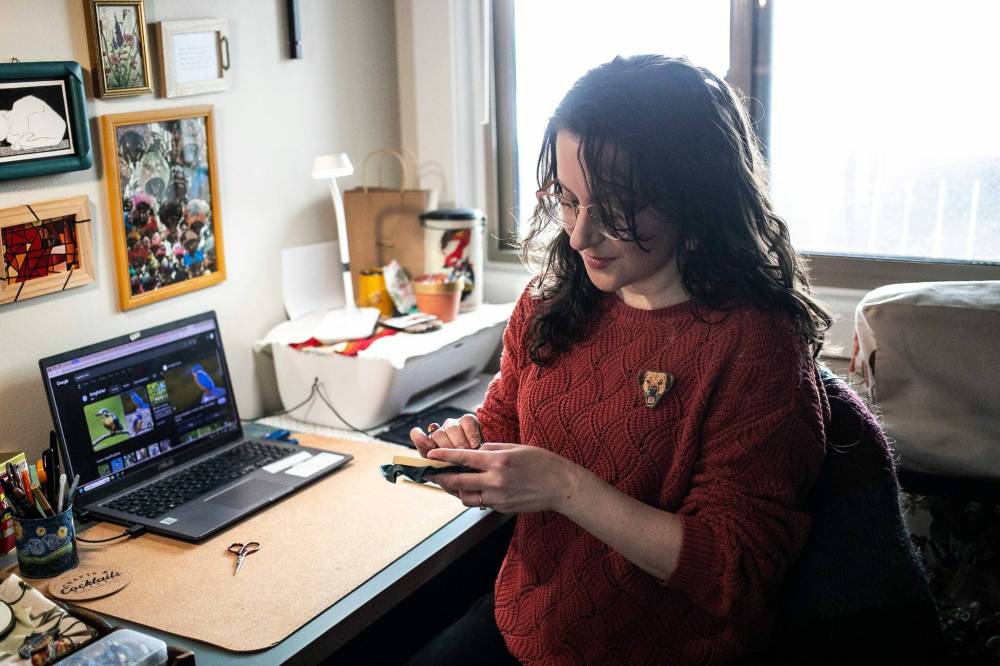
“An empty hoop doesn’t intimidate me the same way an empty page or canvas does.”–Van de Poel
Recently van de Poel has started to incorporate 3D elements such as beads, twigs, bark and wire slip into her hoops.
“Wire slip is a form of stumpwork, a style of embroidery where the stitches are raised above the fabric. You encase a shape, created with thin jewelry wire, in stitches, after which it can be cut out and attached to the embroidery hoop. For someone who stitches animals, it opens a world of possibilities when it comes to ears and paws,” she explains.
Not to mention horns, such as the ones perched atop the head of Skye the Scottish Highland Cow, Van de Poel’s most arresting and ambitious work to date.
MIKAELA MACKENZIE / FREE PRESS Van de Poel’s recent focus has been on birds, allowing for a palette of bright colours.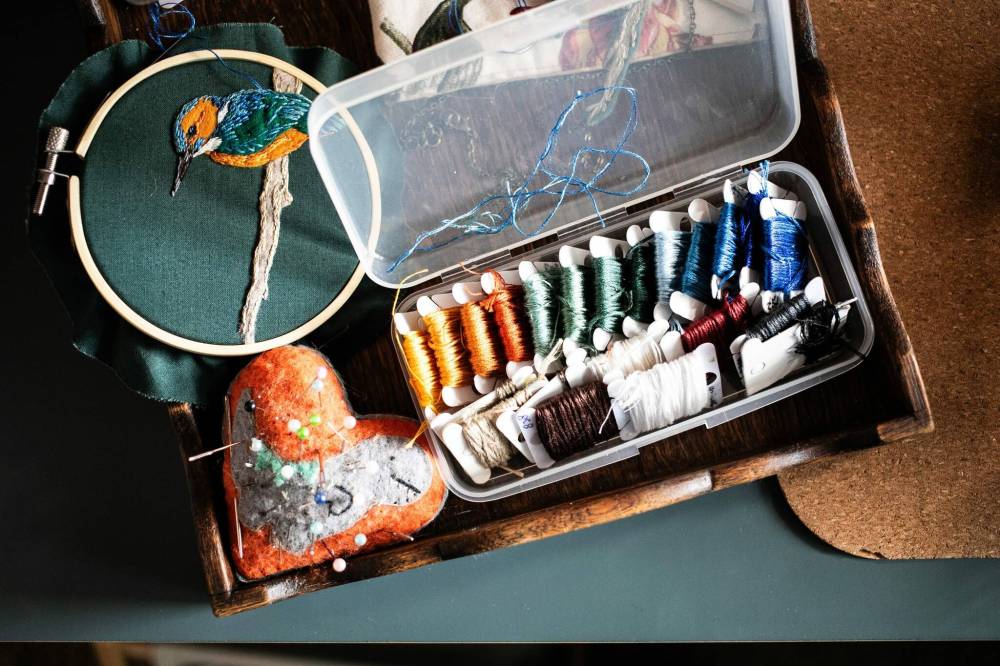
Made with around 35 differently coloured embroidery flosses, as well as tapestry wool, vintage silk substitute thread, alpaca yarn and mohair yarn, it took van de Poel more than 50 hours to embroider the multi-layered three-dimensional cow and its fully stitched background.
“I have never done anything like this before,” she says. “The idea for the background came before the main figure. I wanted to create a hoop inspired by the gorgeous landscapes on the Isle of Skye. I had seen heather on a trip to the Scottish Highlands and it all came together when I found tapestry wool that matched the heather.”
Van de Poel came to embroidery late. She only started sewing during the pandemic when she made gifts to send to friends and family back home in the Netherlands, where she is from.
Learning in the most modern of ways — she credits YouTube videos for introducing her to different stitches — she was motivated to book a course with embroidery artist Danielle Clough, where she learned there was no right or wrong way to embroider.
MIKAELA MACKENZIE / FREE PRESS The process is labour-intensive as van de Poel creates a seamless blend of colours.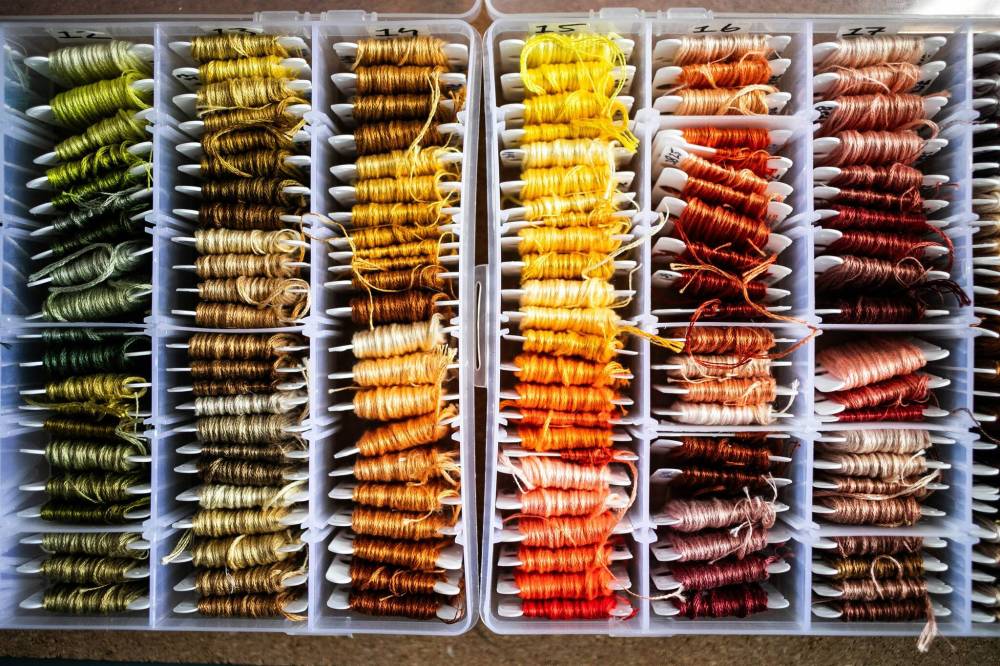
That knowledge was liberating.
“I had only ever seen pretty little flowers or really neat cross-stitching. Danielle’s work is vibrant and bold… you can see the stitches, they create great texture. That’s when I realized embroidery could be like drawing or painting with thread,” she says.
Making Skye has spurred her to create more detailed and elaborate works, which posts on her Instagram account @nuland_crafts.
Birds are her latest subjects and one of her pieces, a horned owl, is showing at the Manitoba Craft Council’s Craft in Miniature exhibition (until Feb. 27).
“Stitching birds has opened up a world with so many bright and interesting colours. But I also like the challenge of doing something new. I have had a marine idea in my head for a while but I haven’t been able to figure it out fully. As a kid I was obsessed with whales so I do want to stitch a whale at some point,” she says.
She is reluctant to describe her work as art — “I feel I need more practice before I can considered an artist” — but her works are tiny masterpieces, featuring a whole host of animals, from butterflies and bees to rabbits and raccoons.
MIKAELA MACKENZIE / FREE PRESS Skye the Scottish Highland Cow is Zena van de Poel’s most ambitious and arresting work to date.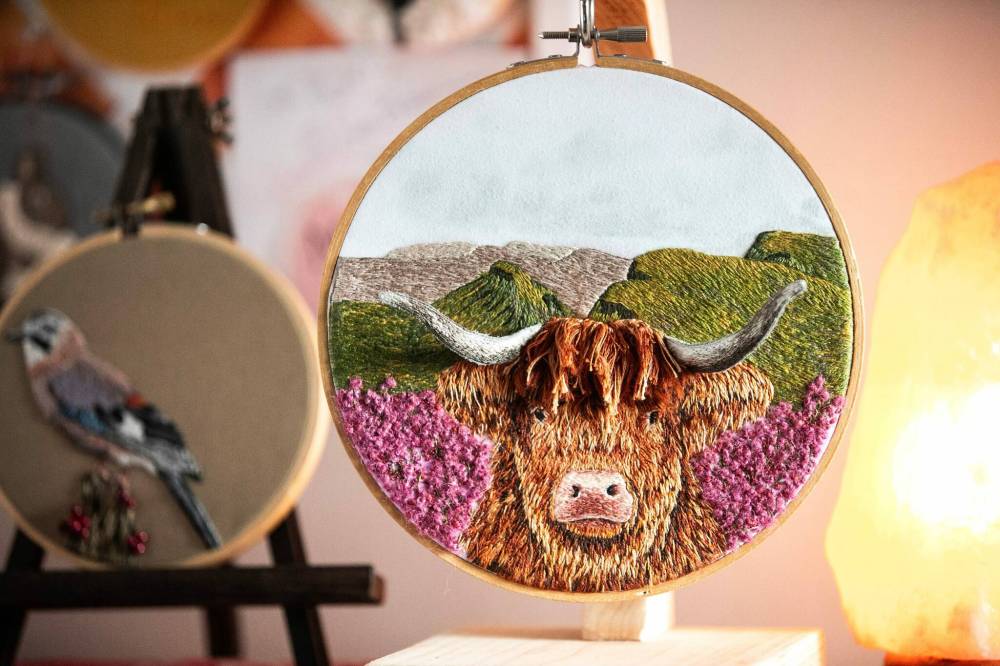
“An empty hoop doesn’t intimidate me the same way an empty page or canvas does,” she says.
“Yes, a hoop is usually just round, but that means you can have fun figuring out a composition that works with or incorporates the roundness in the design. Yes, thread can’t be blended and mixed like paint, but that means you get extra-creative to create a seamless blend. It’s just another embroidery animal, but how can I add a little twist? Being able to problem-solve within these parameters is part of the fun.”
MIKAELA MACKENZIE / FREE PRESS Van de Poel layers intricate stitches to create textured thread ‘paintings.’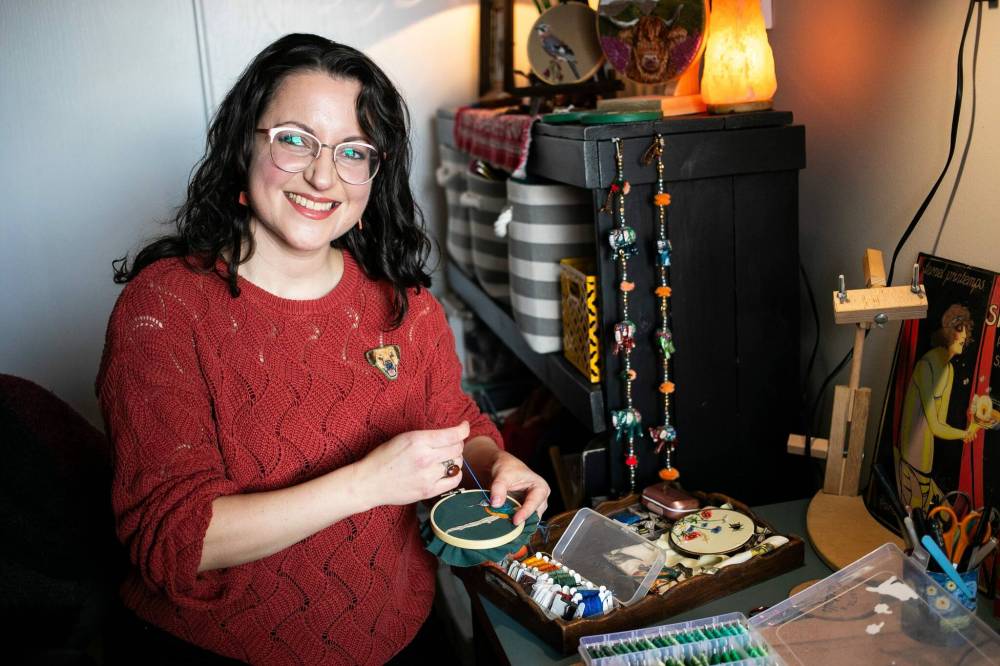
Labour-intensive and slow is this technique of sewing tiny stitches and placing them in exactly the right spot. Van de Poel is surprised at the hold it has on her now.
“Considering I’m a very impatient person in any other aspect of my life, it’s honestly quite surprising I’ve decided to funnel whatever little patience I have into this endeavour,” she laughs.
AV.Kitching@freepress.mb.ca

AV Kitching is an arts and life writer at the Free Press. She has been a journalist for more than two decades and has worked across three continents writing about people, travel, food, and fashion. Read more about AV.
Every piece of reporting AV produces is reviewed by an editing team before it is posted online or published in print — part of the Free Press‘s tradition, since 1872, of producing reliable independent journalism. Read more about Free Press’s history and mandate, and learn how our newsroom operates.
Our newsroom depends on a growing audience of readers to power our journalism. If you are not a paid reader, please consider becoming a subscriber.
Our newsroom depends on its audience of readers to power our journalism. Thank you for your support.
